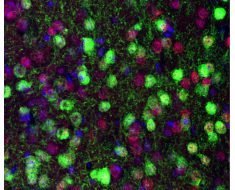Using a technology that provides a ‘high-resolution view’ of the status of individual cells, a team of researchers has gained new insights into the embryonic development of the mouse heart. They discovered that during development, when progenitor heart cells progressively differentiate into various cell types, the Hippo pathway is essential to coordinate the development of these cell types into a working heart. The study appears in the journal Developmental Cell.
“The Hippo pathway is known for its role as an inhibitor of adult heart regeneration,” said corresponding author Dr. James Martin, professor of molecular physiology and biophysics and Vivian L. Smith Chair in Regenerative Medicine at Baylor College of Medicine. “If you take the Hippo pathway away, then the heart can regenerate.”
In this study, Martin and his colleagues asked whether the Hippo pathway also was involved in the embryonic development of the heart. Specifically, they investigated the role the pathway played in regulating the development of a group of cardiac progenitor cells called epicardial cells. During development and heart injury, these cells become essential supporters of the cardiomyocytes, the beating muscle cells of the heart.
The researchers genetically engineered mice to lack two essential components of the Hippo pathway, and then determined how the hearts developed when compared with those of normal mice. Martin and his colleagues looked at the structure of the heart blood vessels and also analyzed nearly 18,200 cells taken from heart tissue during a period of development.
The Hippo pathway is essential for normal heart development
The hearts of the mice with a defective Hippo pathway were smaller than normal hearts. Unexpectedly, blood vessel development was also defective; blood vessel coverage was reduced and less dense. These and other results suggested that the Hippo pathway is required for normal heart and blood vessel development.
“In addition, we analyzed thousands of cells from developing heart tissue with a technology called single cell transcriptomics,” said Martin, who also is director of the Cardiomyocyte Renewal Lab at the Texas Heart Institute. “This technology allowed us to determine the status of thousands of cells individually. For instance, we learned what genes were turned on and what molecules the cells were expressing. This high level of detail shed light into the cellular and molecular processes leading to an adult heart and how they are coordinated.”
The researchers learned of a number of genes and pathways they had not thought would be linked to the Hippo pathway during the heart’s embryonic development, for instance, the retinoic acid or vitamin A pathway. They also discovered that when the Hippo pathway is defective during the heart’s embryonic development, cardiac fibroblasts do not advance through their normal developmental program.
“We found cells suspended in intermediate states and producing factors important for regulating growth and proliferation of vascular endothelial cells,” Martin said. “That was all unexpected.”
These new insights suggest that during heart development, when cells progress through transition states, the Hippo pathway regulates the production of factors that regulate normal growth of vascular endothelial cells. Importantly, the Hippo pathway plays an essential role in this process, much like an ‘orchestra director’ coordinating the development of several types of cells in the heart.
“We know that the Hippo pathway is involved in regeneration of the adult heart, but also controls the size of the developing heart,” Martin said. “As the heart grows, more vascular cells need to move into the heart to provide blood vessels to sustain its growth and later support the function of the adult heart. We think that the Hippo pathway can sense the size of the growing heart and, by regulating a number of secreted factors, determine how many cardiac fibroblasts and endothelial cells develop in the heart.”
Martin and his colleagues are applying these findings to better understand regeneration of the adult heart.
Source: Read Full Article





